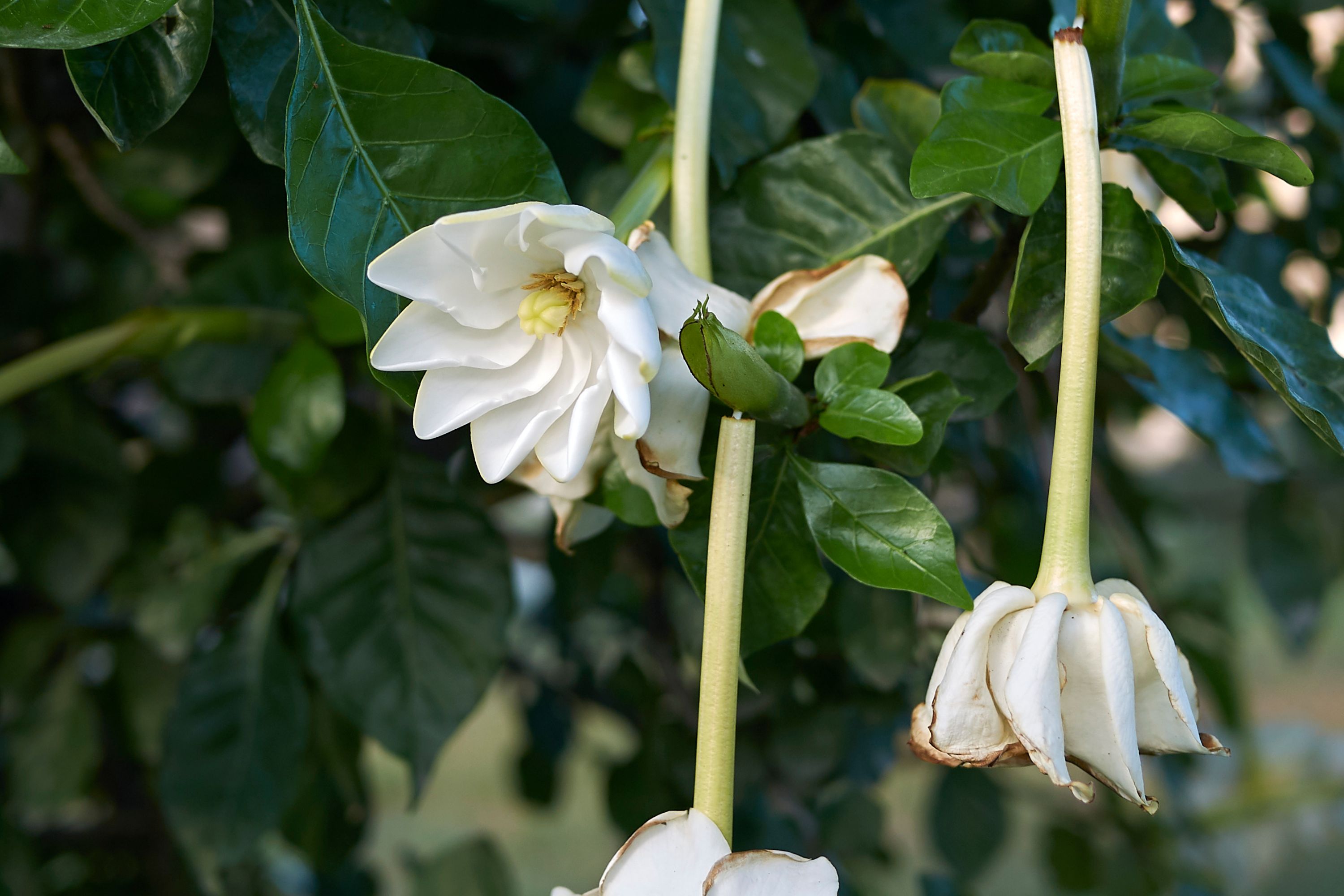Thunbergia Gardenia
(Gardenia thunbergia)

Description
Gardenia thunbergia, commonly known as Thunbergia Gardenia or Wild Gardenia, is a species of flowering plant in the Rubiaceae family. Native to the tropical and subtropical regions of Africa, this mesmerizing shrub has captured the hearts of plant enthusiasts and gardeners alike with its striking flowers and delightful fragrance. In this article, we will explore the various aspects of Gardenia thunbergia, including its taxonomy, morphology, habitat, cultivation, and cultural significance. Taxonomy Gardenia thunbergia belongs to the plant family Rubiaceae, which includes other popular genera such as Coffea and Ixora. It was first described and named by the renowned Swedish botanist Carl Peter Thunberg, hence the species epithet thunbergia. Thunbergia Gardenia is part of the Gardenia genus, which comprises approximately 140 species of evergreen shrubs and small trees. Morphology Thunbergia Gardenia is a compact evergreen shrub that typically grows to a height of 1 to 2 meters (3 to 6 feet). It possesses dense, glossy, dark green leaves that are elliptical or obovate in shape, measuring around 7 to 15 centimeters (2.8 to 5.9 inches) in length. The foliage forms an attractive backdrop for the plant's mesmerizing flowers. The flowers of Gardenia thunbergia are the true showstoppers. They are large, solitary, and trumpet-shaped, characterized by their waxy texture and pure white coloration. Each flower can reach a diameter of 8 to 10 centimeters (3.1 to 3.9 inches) and emits a sweet, intoxicating fragrance that permeates the surrounding area. The petals are beautifully arranged in a pinwheel fashion and exhibit delicate ruffling along the edges. The prominent stamens, with their golden anthers, provide an eye-catching contrast against the pristine white backdrop. Habitat and Distribution Gardenia thunbergia is indigenous to the tropical and subtropical regions of Africa, where it thrives in a variety of habitats. It can be found growing naturally in woodlands, thickets, and along riverbanks, displaying its ethereal beauty against the verdant backdrop of its native lands. The plant is primarily distributed in countries such as South Africa, Mozambique, Zimbabwe, and Swaziland, where it enjoys the warm climate and well-drained soils. Cultivation Gardenia thunbergia has gained immense popularity among gardeners due to its aesthetic appeal and heavenly fragrance. Cultivating Thunbergia Gardenia requires some specific conditions to ensure optimal growth and blooming. Climate: Thunbergia Gardenia is best suited for tropical and subtropical climates, where it can thrive in warm temperatures ranging between 20°C and 30°C (68°F to 86°F). It is sensitive to frost and cold weather, so it is advisable to protect the plant during colder months. Light: This plant thrives in bright, indirect light. While it can tolerate partial shade, it generally prefers at least 4 to 6 hours of sunlight each day for healthy growth and profuse flowering. Soil: Gardenia thunbergia prefers well-draining, slightly acidic to neutral soils. A loamy soil mixture enriched with organic matter is ideal for providing the necessary nutrients and moisture retention. Watering: Thunbergia Gardenia has moderate water requirements. It is essential to keep the soil consistently moist but not waterlogged. Regular watering during the growing season, with reduced frequency in the dormant period, will help maintain the plant's health and vigor. Fertilization: Gardenia thunbergia benefits from regular feeding with a balanced, slow-release fertilizer. Apply the fertilizer during the growing season, following the package instructions for the appropriate dosage. This will provide the necessary nutrients to support robust growth and abundant flowering. Pruning: Pruning Thunbergia Gardenia is essential to maintain its compact shape and encourage new growth. It is best done after the flowering period. Remove any dead or diseased branches, and trim back excessive growth to maintain a desirable size. Pruning also helps improve air circulation, which can prevent fungal diseases. Pests and Diseases: While Thunbergia Gardenia is generally resilient, it can occasionally be susceptible to pests and diseases. Common pests include aphids, mealybugs, and scale insects. Regular inspection of the plant and appropriate pest control measures, such as using organic insecticides or introducing beneficial insects, can help keep infestations in check. Fungal diseases like powdery mildew and leaf spot can be prevented by providing adequate air circulation and avoiding overhead watering. Propagation: Gardenia thunbergia can be propagated through various methods, including stem cuttings and seeds. Stem cuttings are a popular choice, as they have a higher success rate. Take 6 to 8-inch stem cuttings from healthy, mature branches, ensuring they have at least two sets of leaves. Dip the cut ends in a rooting hormone and plant them in a well-draining potting mix. Place the cuttings in a warm, humid environment and keep the soil moist until roots develop. Once rooted, transplant the cuttings into individual pots or the desired garden location. Cultural Significance Gardenia thunbergia holds cultural significance in several regions where it is native or cultivated. In South Africa, the flowers of Thunbergia Gardenia are traditionally used to make garlands and worn during ceremonies or festive occasions. The fragrant blooms are also employed in perfumery and aromatherapy for their soothing and calming properties. Beyond its cultural importance, Gardenia thunbergia is widely cherished for its ornamental value. Its stunning flowers and captivating fragrance make it a popular choice for gardens, parks, and landscaping projects. The plant's enchanting presence adds a touch of elegance and beauty to any setting, whether used as a standalone specimen, in mixed borders, or as a focal point in flower beds. Conclusion Gardenia thunbergia, the Thunbergia Gardenia or Wild Gardenia, is an exquisite flowering shrub that captivates with its stunning white flowers and delightful fragrance. Native to the tropical and subtropical regions of Africa, this plant thrives in warm climates and well-drained soils. With proper care and cultivation, Gardenia thunbergia can grace gardens and landscapes, adding a touch of enchantment and elegance to the natural surroundings. Its cultural significance and ornamental value make it a beloved choice among plant enthusiasts, and a sight to behold for anyone fortunate enough to experience its beauty.
Taxonomic tree:







